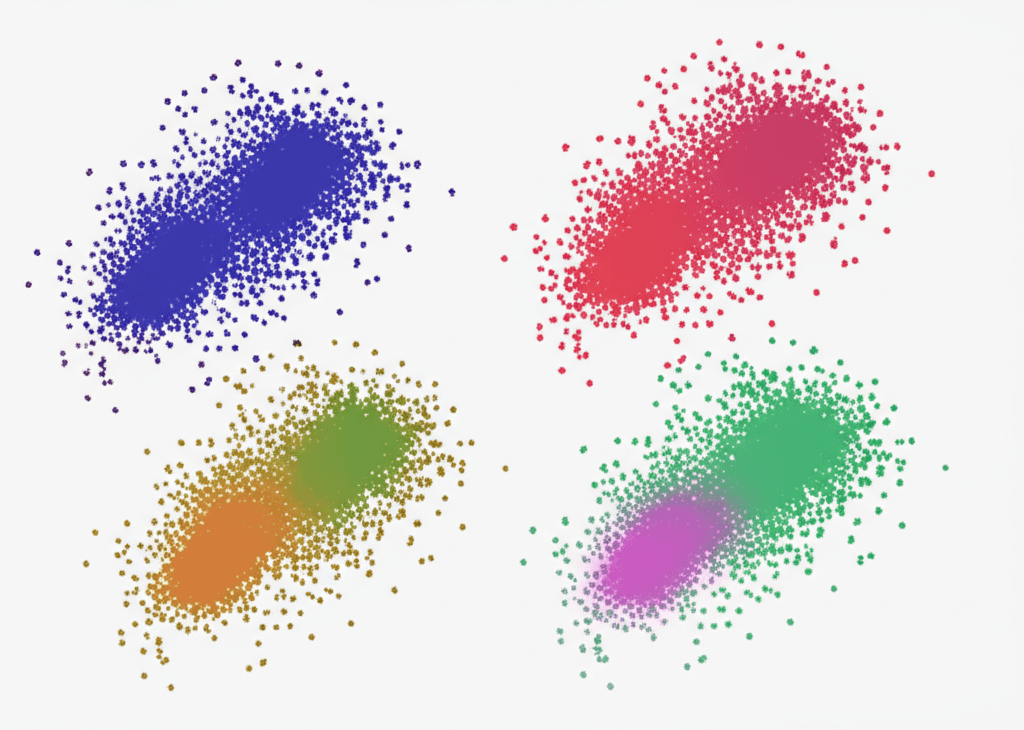Creating reproducible machine learning visualizations is a common challenge, especially when using dimensionality reduction techniques like UMAP. Many data scientists and developers encounter situations where their cluster plots change dramatically between runs, making it difficult to present stable results to stakeholders or maintain consistent dashboards. This article explores why UMAP produces varying results and provides practical solutions for achieving consistent, reproducible clustering outcomes.
Understanding the role of randomness in optimization algorithms is crucial for solving reproducibility issues. Optimization algorithms often incorporate randomness to escape local minima and find better global solutions. This stochastic approach allows the algorithm to make seemingly suboptimal moves that ultimately lead to discovering superior solutions that deterministic approaches might miss.
UMAP employs randomness in multiple aspects of its algorithm. The technique uses random initialization for data point placement and makes stochastic decisions during the optimization process. These random elements help UMAP avoid getting stuck in poor local minima and discover more meaningful cluster structures. However, this same randomness causes different results each time you run the algorithm with the same data.
Several factors contribute to UMAP’s variability between runs. The random initialization of embeddings creates different starting points for the optimization process. The stochastic nature of the optimization algorithm itself introduces variability through random sampling and decision-making. Additionally, the nearest neighbor search process may incorporate randomness depending on implementation details.
To achieve consistent UMAP results, you need to control these sources of randomness. The most straightforward approach involves setting random seeds throughout your pipeline. In Python implementations, you can use numpy.random.seed() and random.seed() functions before running UMAP. Many UMAP implementations also accept a random_state parameter that controls internal randomness.
Beyond setting random seeds, consider these additional strategies for reproducibility. Use deterministic algorithms for nearest neighbor searches when possible. Precompute and cache nearest neighbor graphs to eliminate variability in this step. Maintain consistent preprocessing and normalization steps across runs. Document all parameter settings and software versions used in your analysis.
Here is a code example demonstrating how to implement these techniques:
import numpy as np
import umap
# Set random seeds for reproducibility
np.random.seed(42)
random.seed(42)
# Initialize UMAP with random_state parameter
reducer = umap.UMAP(random_state=42, n_neighbors=15, min_dist=0.1)
# Fit and transform your data
embedding = reducer.fit_transform(your_data)
Implementing these controls will produce consistent UMAP visualizations across multiple runs. This consistency is particularly valuable when building production systems, creating dashboards, or conducting research that requires reproducible results.
While controlling randomness improves reproducibility, it’s important to understand the trade-offs. Completely deterministic approaches might miss some of the benefits that stochastic optimization provides. In some cases, you might want to run multiple randomized versions and select the most representative or stable result.
Best practices for UMAP reproducibility include version controlling your code and parameters, documenting all random seed values, testing reproducibility across different environments, and validating that controlled randomness doesn’t negatively impact cluster quality.
By implementing these techniques, you can create stable, consistent UMAP visualizations that maintain their structure across multiple runs. This enables more reliable data analysis, better dashboard experiences, and more trustworthy machine learning applications.

Leave a Reply